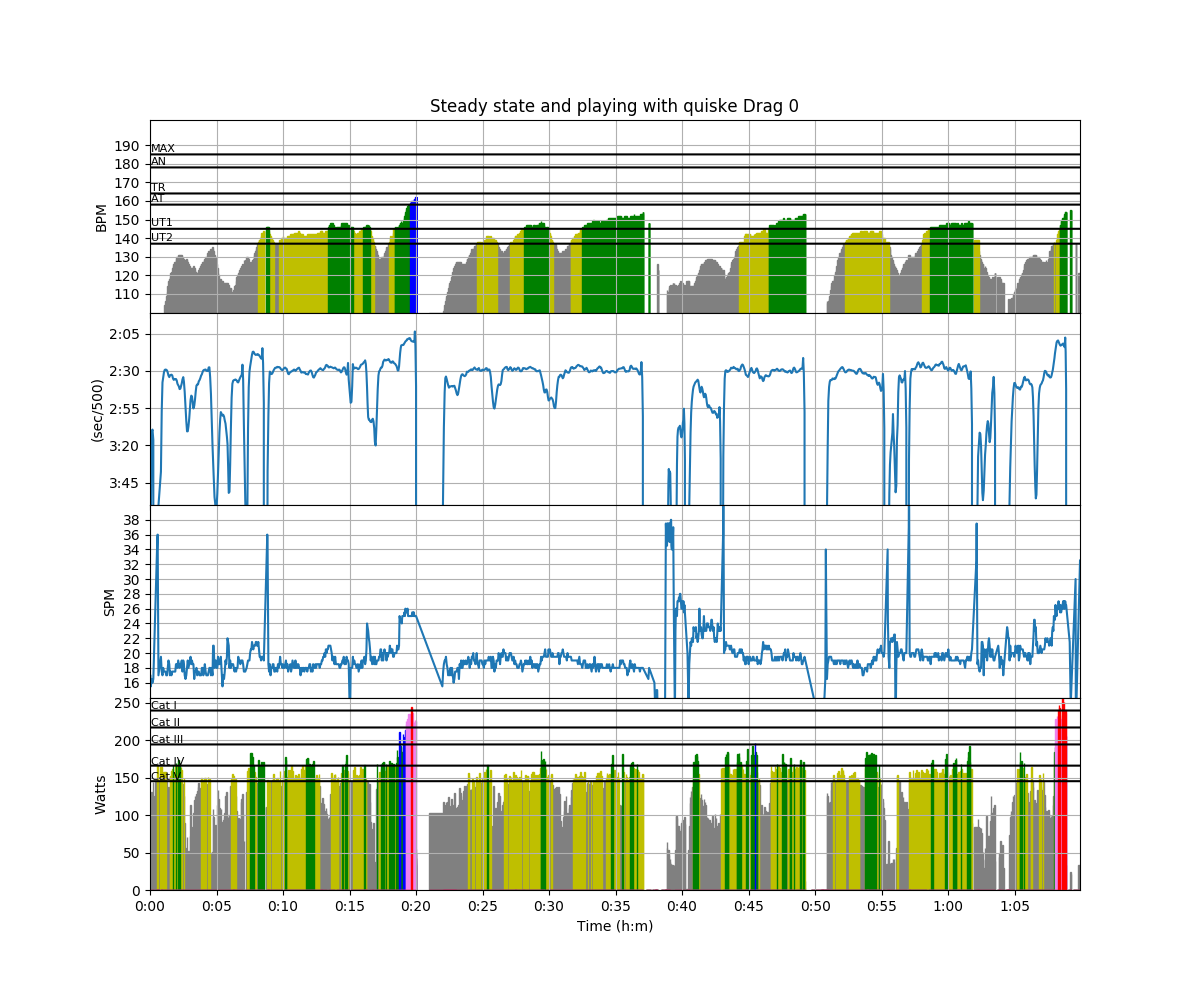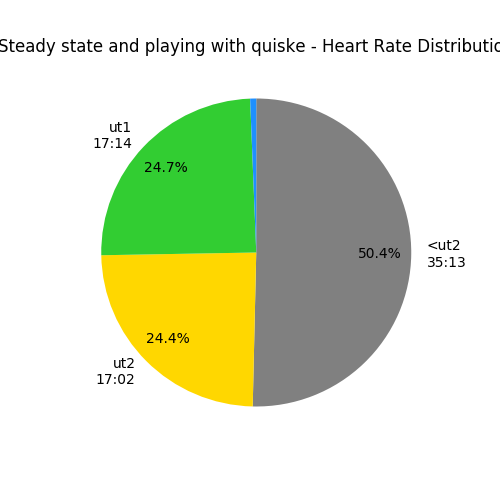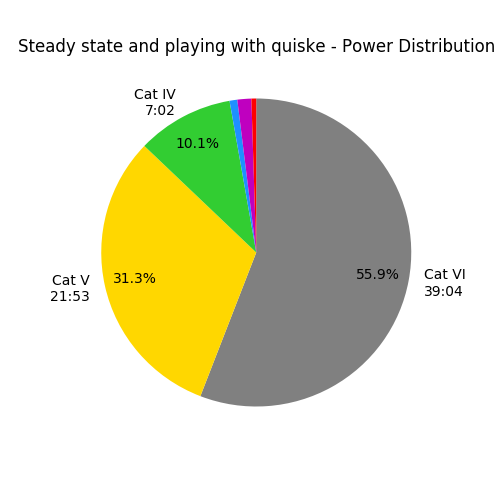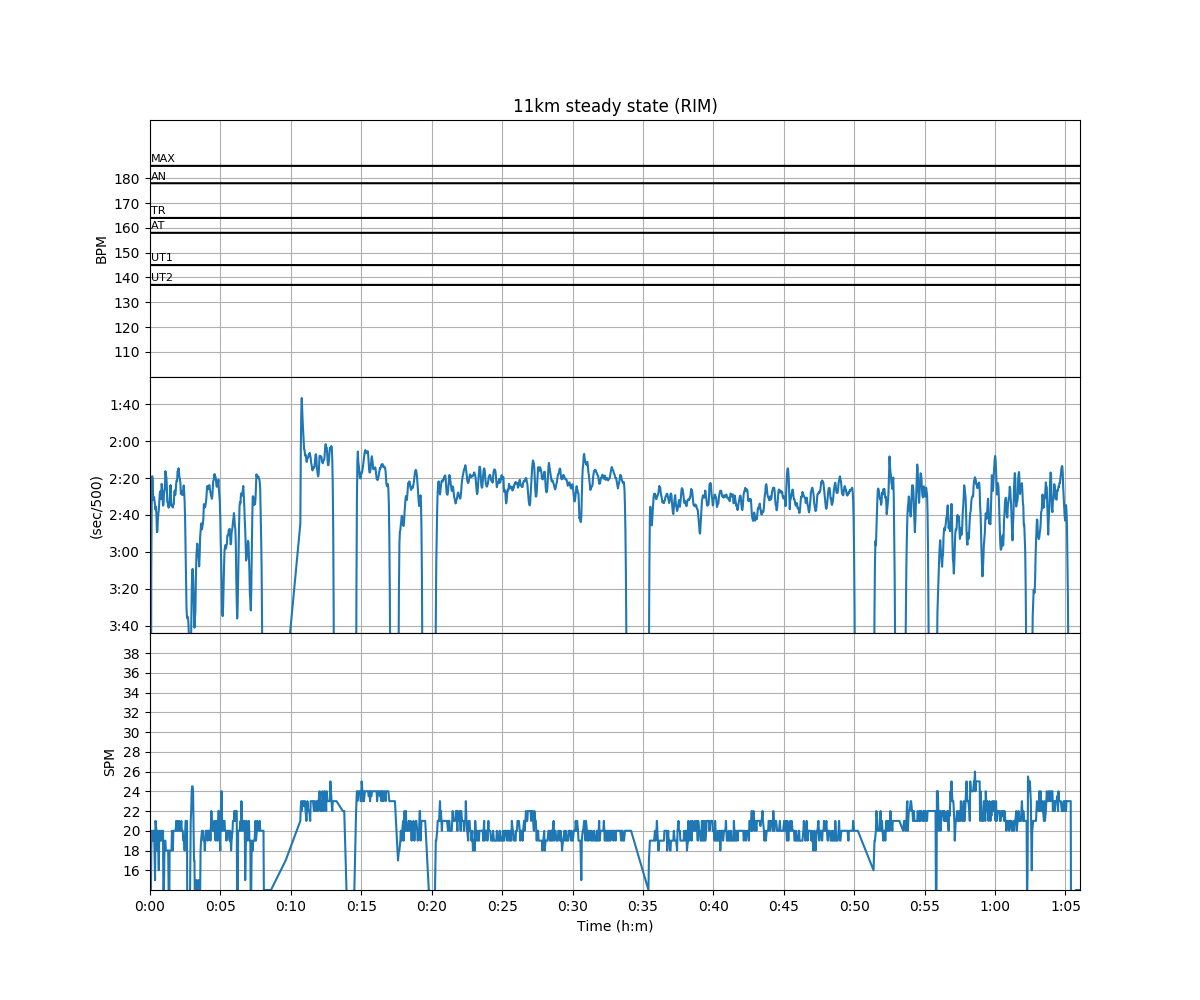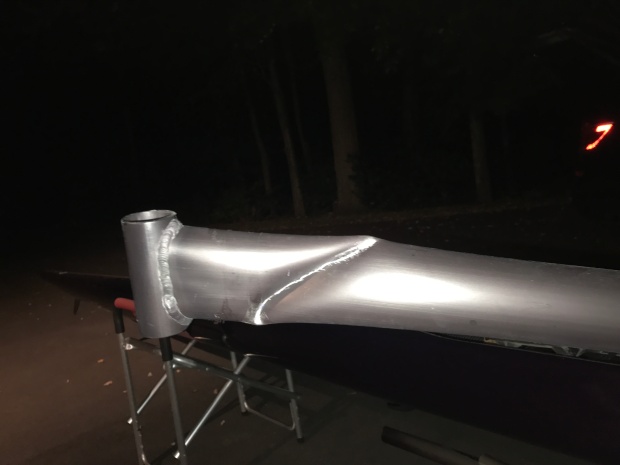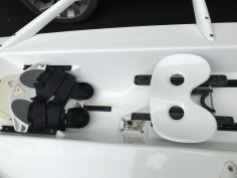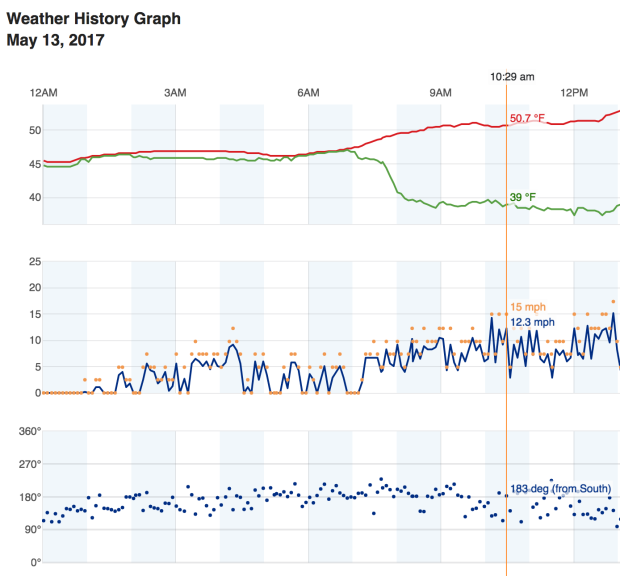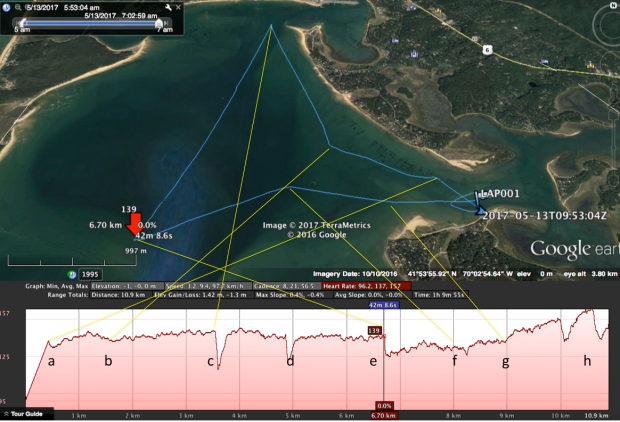Friday – 3/29 – 4 x 1500/random rests:
I had a great row on Thursday 3/28. I was planning on heading out to Lake Quinsigamond to demonstrate Quiske, and hopefully go for a row.
As it turned out, I didn’t get out on the water. But, I was working at home, so I could try the experiment that I wanted to do on the erg.
I have been corresponding with the developer of PainSled. I really like the painSled app. It is simple and generally pretty reliable, but recently, it seems to be dropping strokes. The app eventually catches up, but the missing strokes mean that summaries and plots look ugly.
The developer thought that the setup that I was using might be causing the problems.

So, I designed an experiment to test the theory. The experiment had 6 parts. I would row 1500 meter pieces.
-
Playing music (spotify streaming using wireless earbuds), stroke scope enabled
-
Playing music (spotify streaming using wireless earbuds), stroke scope disabled
-
No music, earbuds disconnected, stroke scope enabled
-
No music, earbuds disconnected, stroke scope disabled
-
ergdata, no music, no earbuds
-
playing music, BT earbuds
The experiment design was better than the execution. I had a number of interruptions, but despite that, I got some pretty compelling data.

I reviewed the raw exports from painsled. Painsled provides a column with stroke count data, so simply by looking for data records where the stroke count increments by more than 1. Here is a snippet from the spreadsheet which calculates the missing strokes. Notice the line 3 from the bottom where it missed 14 strokes!

The ergdata log file was a bit more challenging to analyze. It does not log the stroke count. So, for this one, I used the distance column. For this workout, my distance per stroke should be between 10 and 15 meters.

You can see all the strokes are in the right range, except for one. I had an interruption in the middle of this piece. Notice the time jumps from 89.6 sec to 338 sec. I needed to go deal with a tradesman who was fixing our garage door. The fan spun down clicking up some additional meters. Otherwise, there were no missing strokes.
So, here is the summary of the results.

So, I got a good workout, and I think I showed with reasonable certainty that the problems are not related to other stuff connected to the phone.
Before I worked out I noticed that my back was a little stiff. In the hours after my workout, my back got progressively tighter and sorer. The symptoms were exactly the same as the late summer of 2017. I had bilateral pain, very low on my back, and it hurt most when changing positions. For example, standing up hurt like hell. It also was impossible to bend over and lift my leg to, say, put on my pants without bracing with one hand.
At that time, I was diagnosed with some minor osteo-arthritis in my SI joints which were exacerbated by some nasty adhesions and imbalances in the muscles of my hips and thighs.
By Friday night, I was hobbling around like 90 year old man. My amateur treatment plan was.
- Rest and ibuprofen for a few days
- Stretching and foam rolling, with light non-rowing aerobic training
- When I was reasonably pain free, start back rowing, avoiding intense pieces for a week or so.
Saturday – 3/30 – No training
My wife and I went down to the cape and had a nice day just hanging out. The highlight of the day was making some tasty Fajitas. Back still mighty sore!
Sunday – 3/31 – No Training
We headed home late in the afternoon. Back getting a little looser, but it still hurt a lot.
Monday – 4/1 – No Training
One more day of rest. Improving daily.
Tuesday – 4/2 – 20 minute treadmill, 10 minute bike
stretches, foam rolling, ab lifts
20 minutes treadmill: 15% incline, 2.9 mph
10 minutes stationary bike, level 14, rolling hills
Wednesday – 4/3 – 20 minutes treadmill, 20 minutes bike
stretches, foam rolling, ab lifts
20 minutes treadmill: 15% incline, 2.9 mph
20 minutes stationary bike, level 14, rolling hills
Thursday – 4/4 – No Training
I had to drop my car off at the shop and didn’t have a window to train.
Friday – 4/5 – 20 minutes treadmill, 20 minute row
stretches, foam rollings, ab lifts
20 minutes treadmill: 15% incline, 2.9 mph
20 minutes on the rower. Heart rate quite high as one might expect. Back felt fine before and after.

Saturday – 3 x 20’/2′ on slides
More experimentation with painsled. I was wondering if the problem was being caused by the painsled app trying to find a BLE HR monitor and not succeeding. So I decided to try disabling that. It didn’t make a difference. But on the plus side, my back held up great!

Sunday – 4/7 – 3 x 20’/2′ on slides
Same workout as Saturday. I was a little more tired and that caused a higher heart rate. The back is still feeling good.

I headed to the airport around 6pm to catch a 8pm flight to Europe.
Monday – 4/8 – No Training
I arrived around noon and was at my hotel at 1pm. I needed to be in the office by 2:30, no time for a workout.










